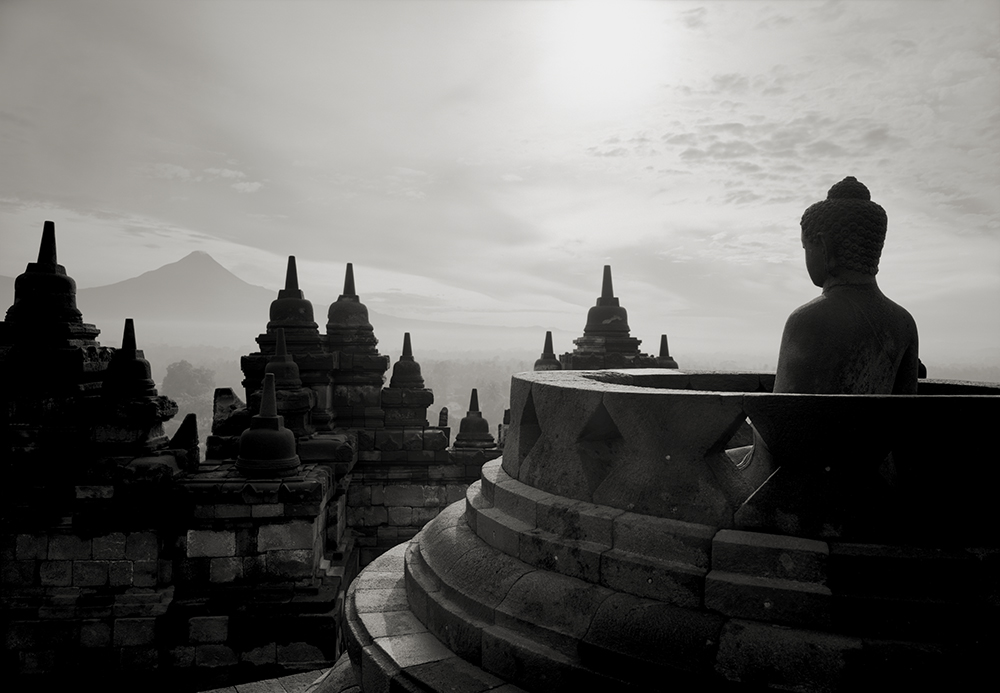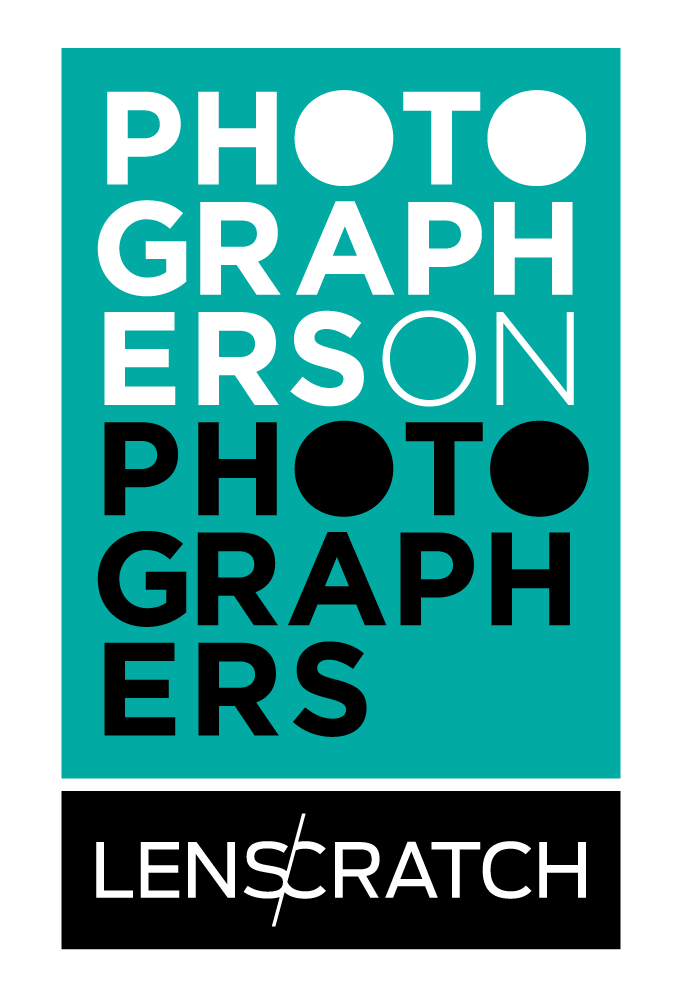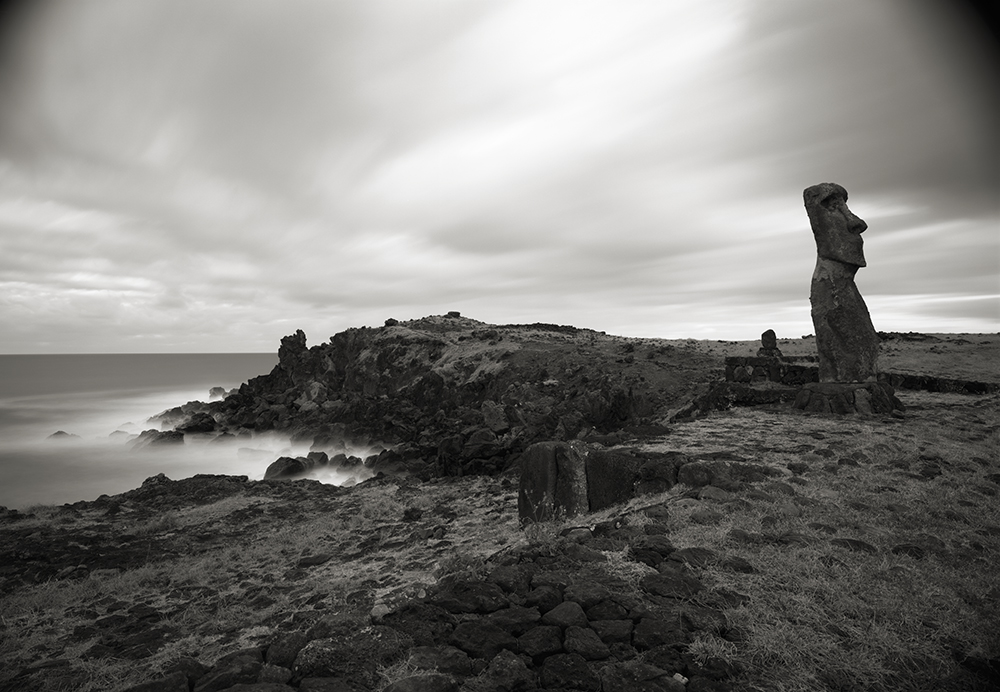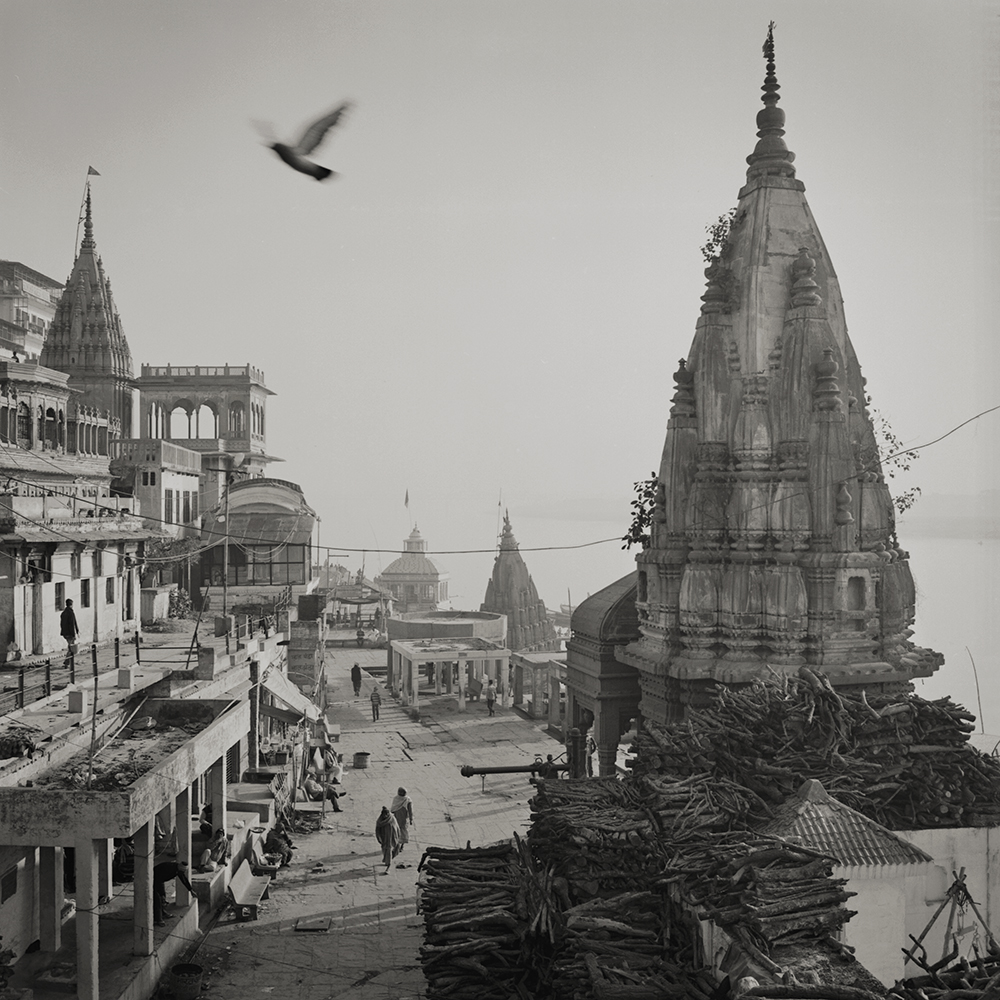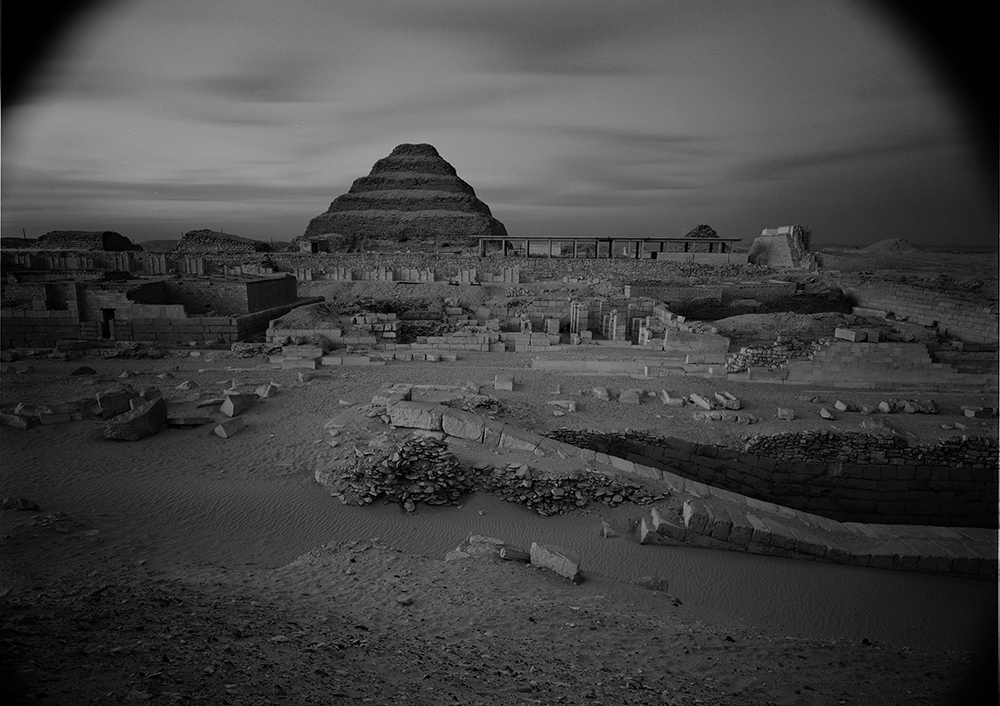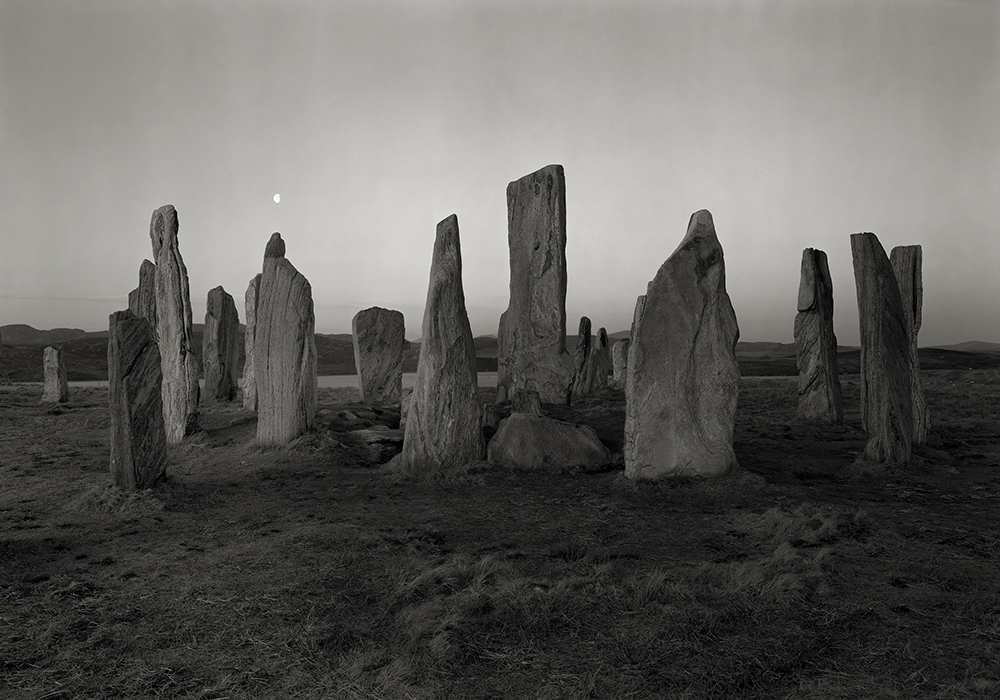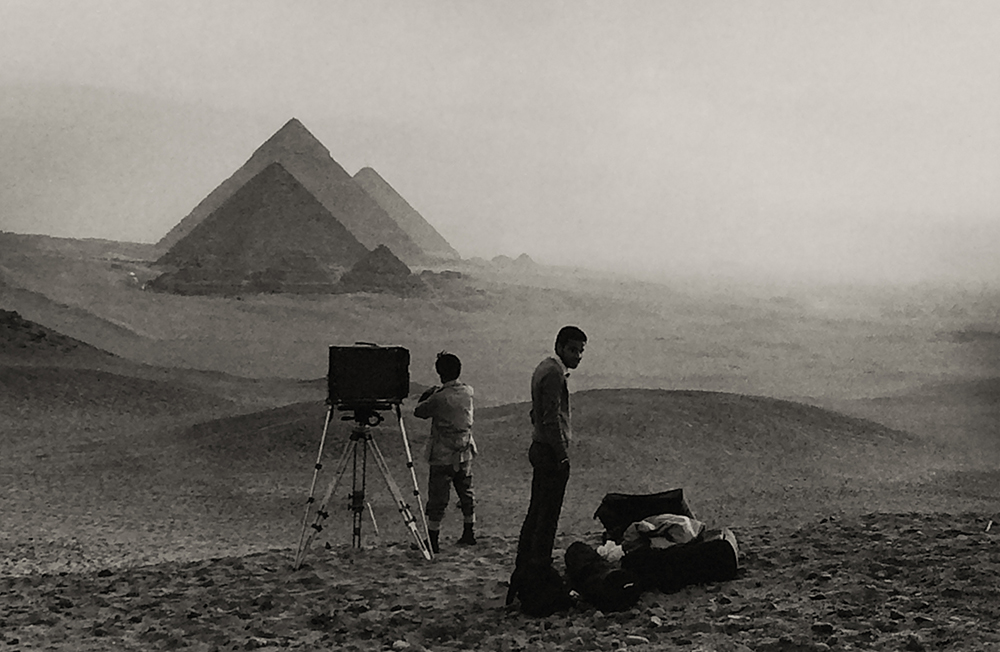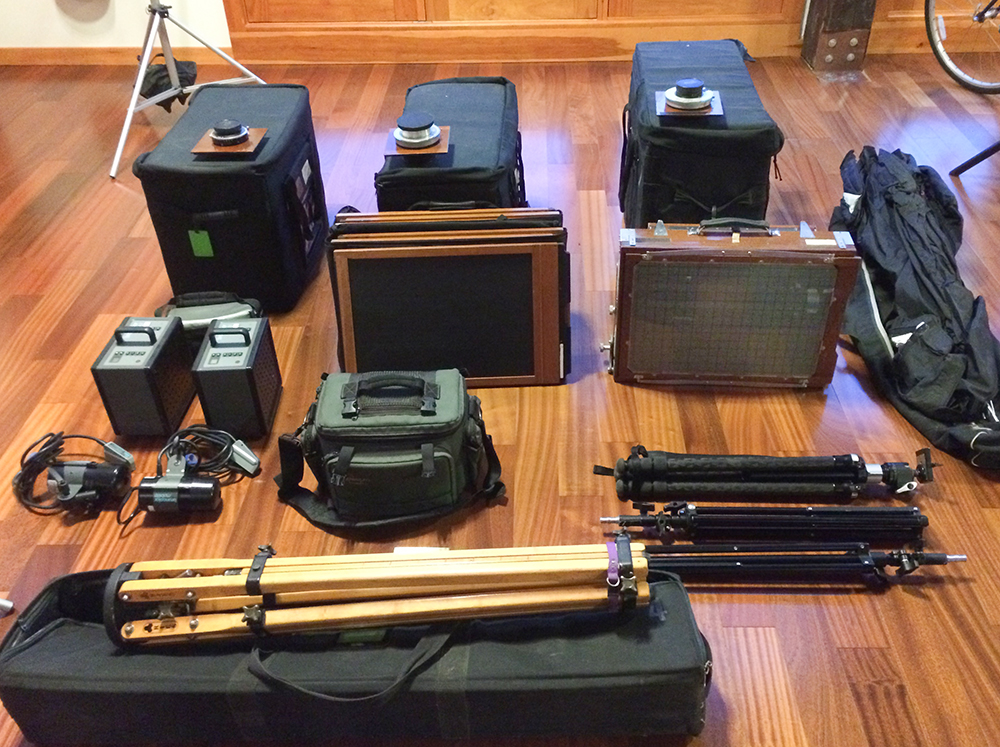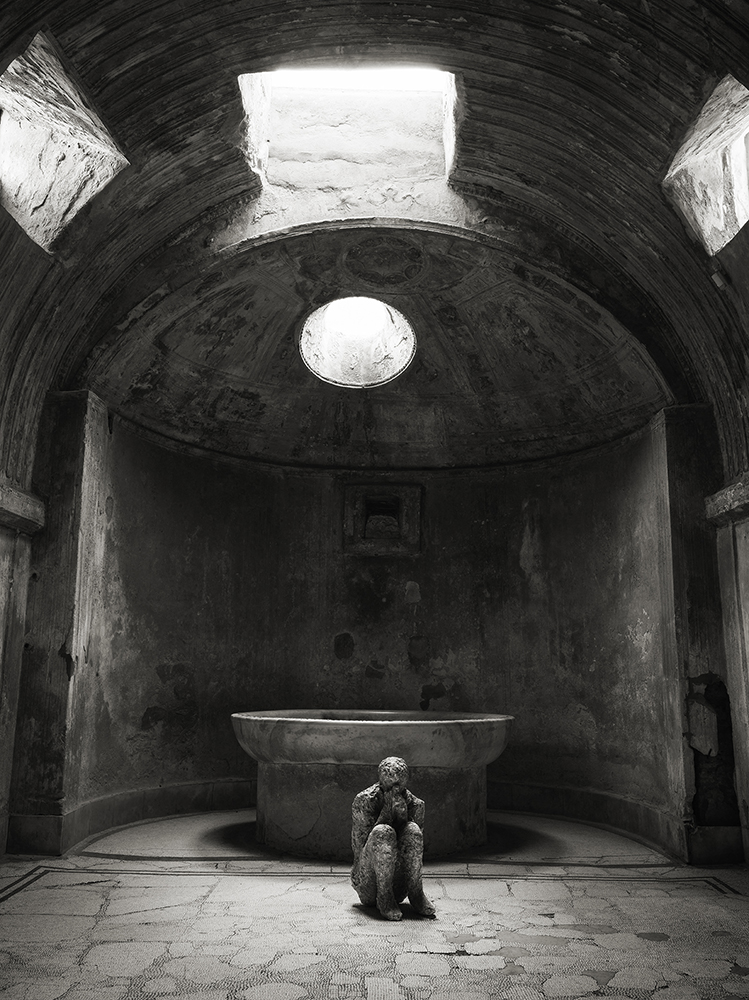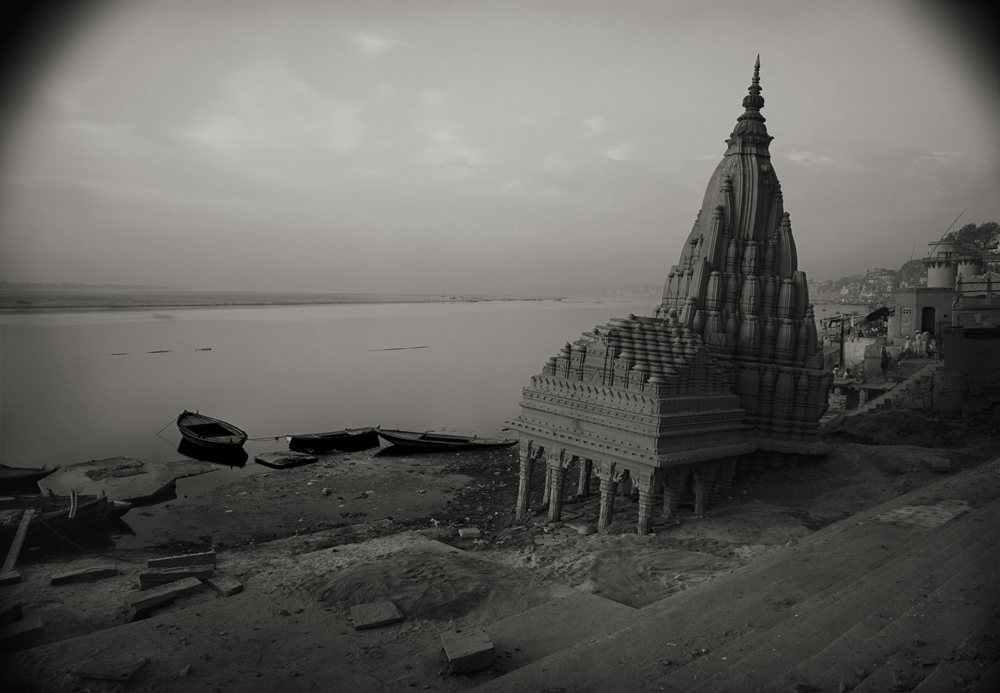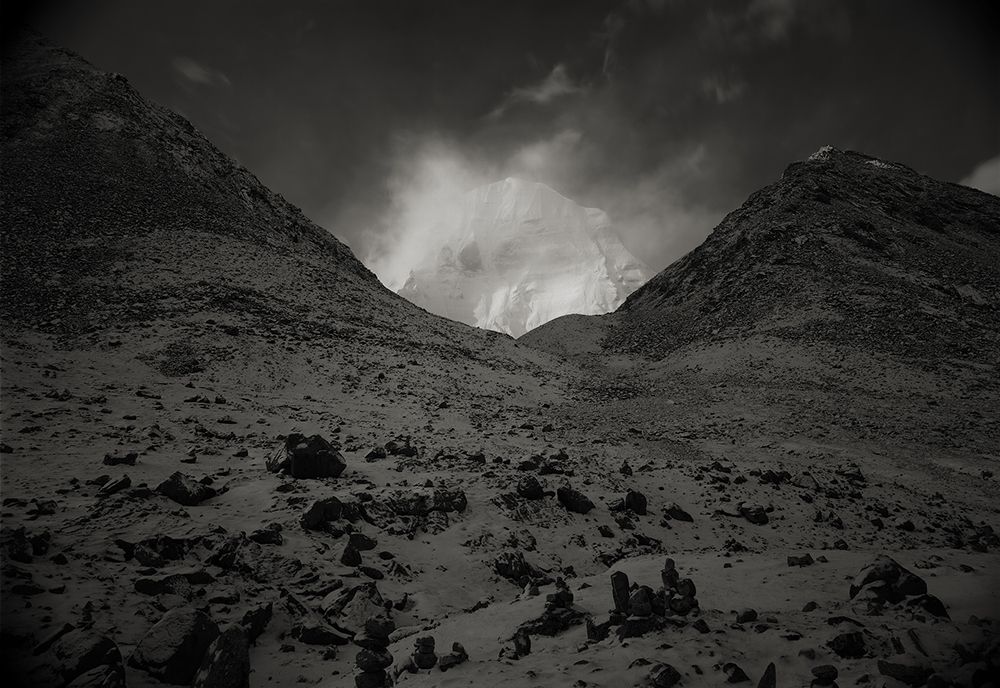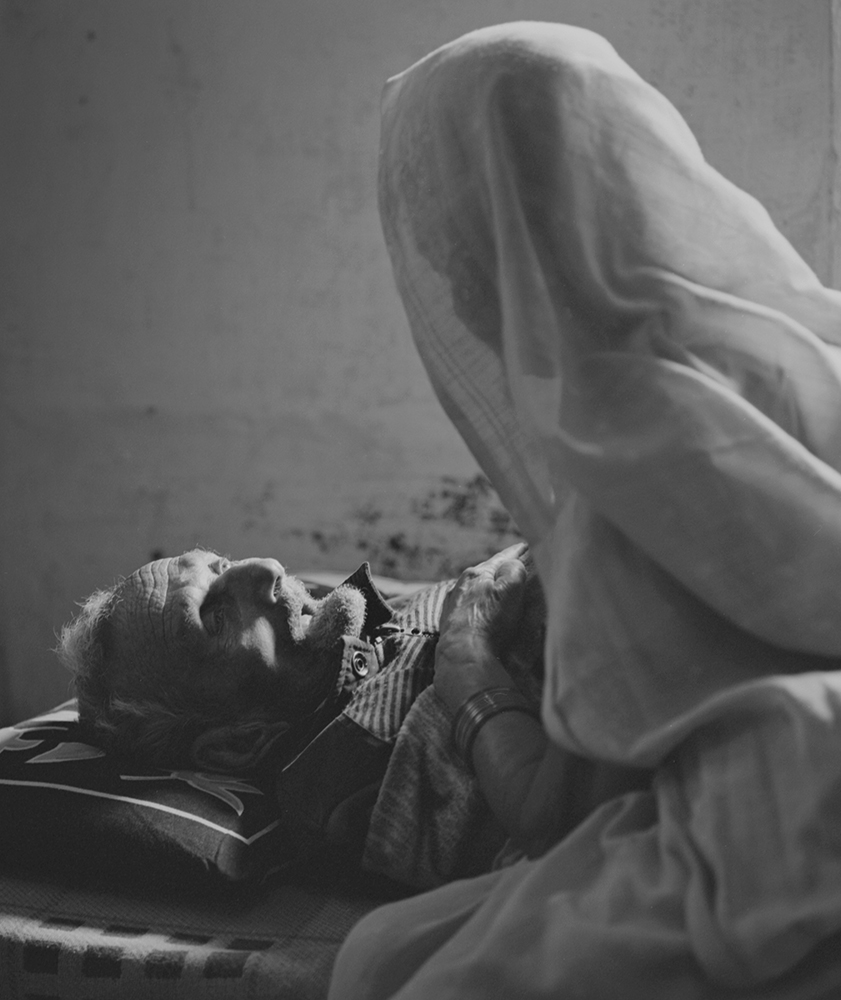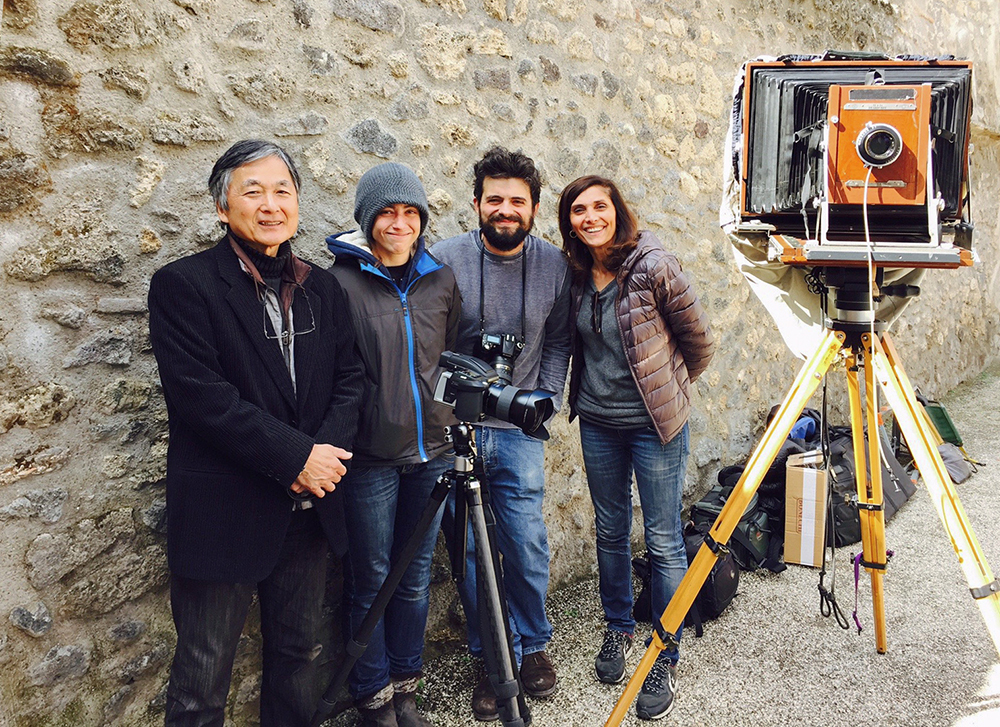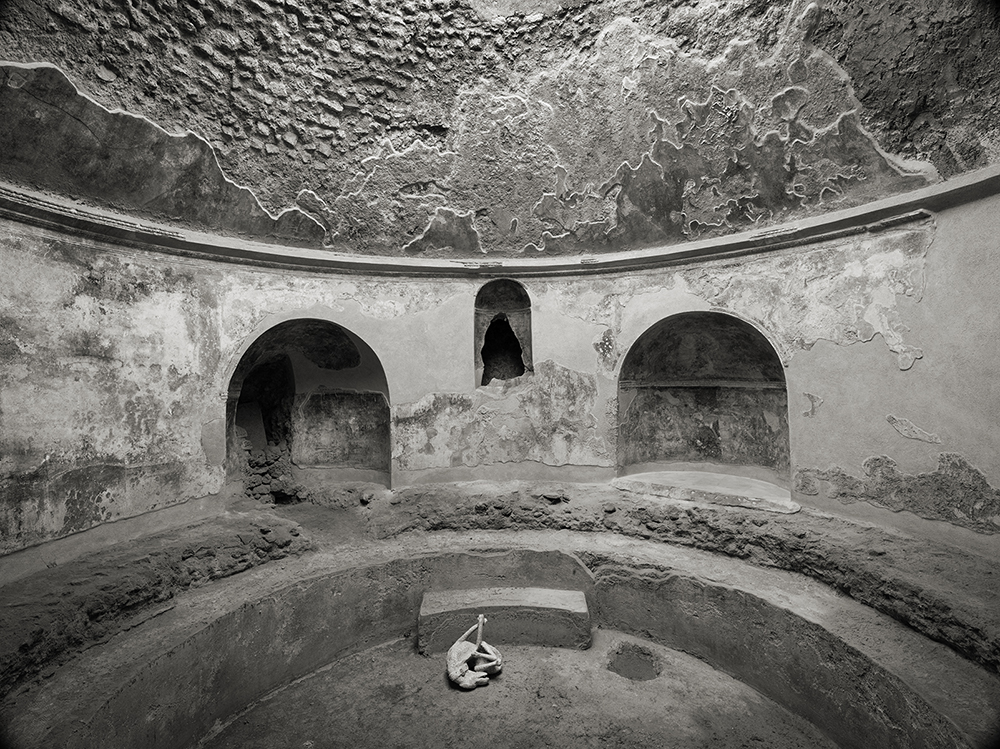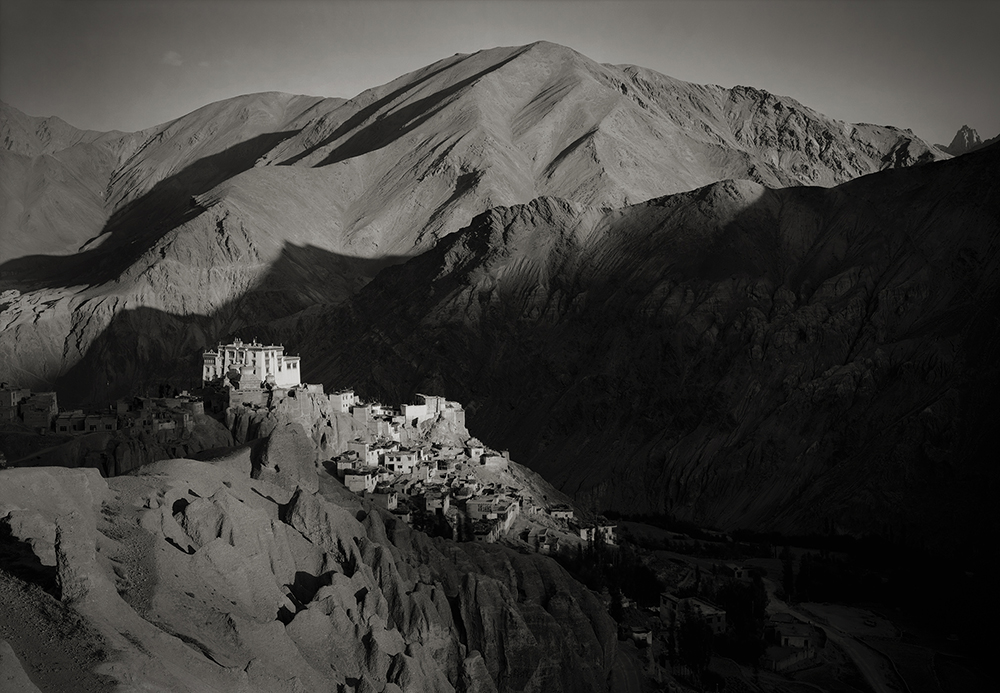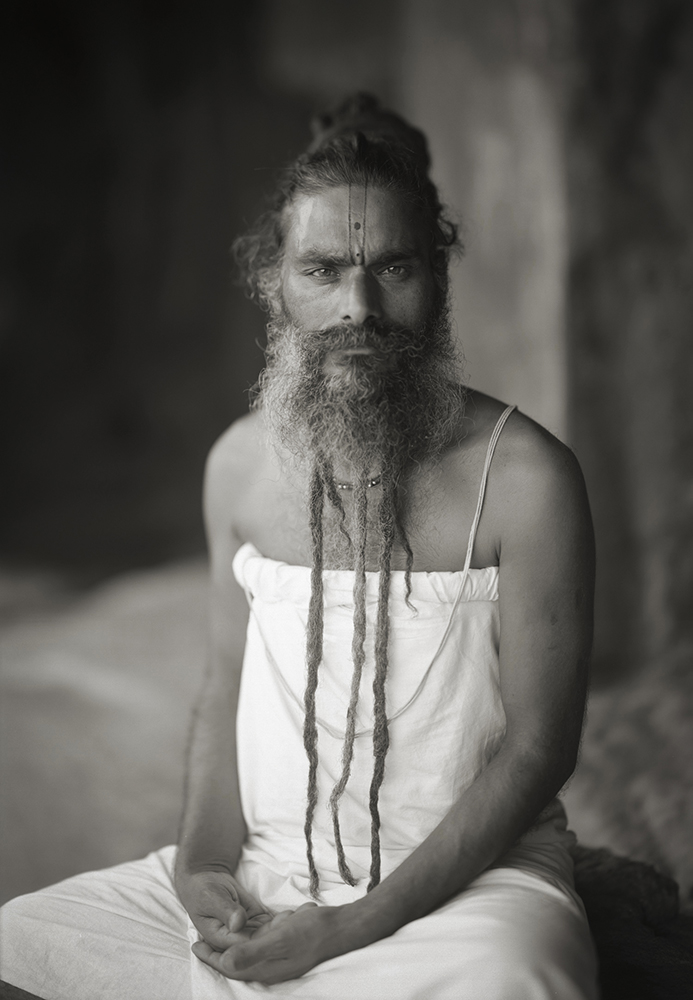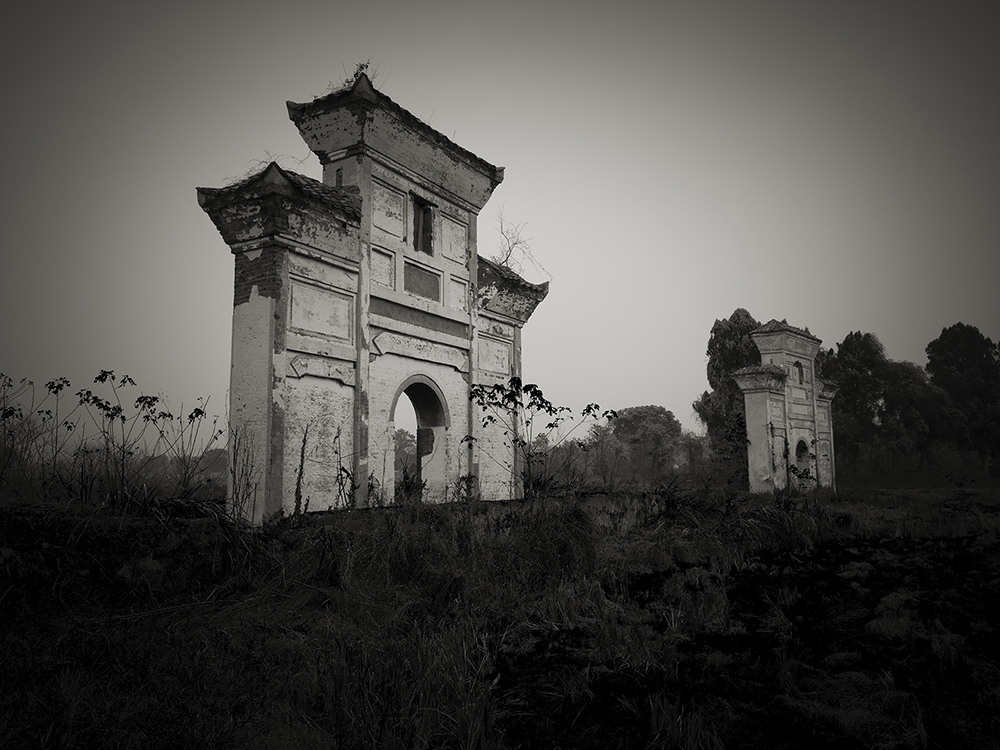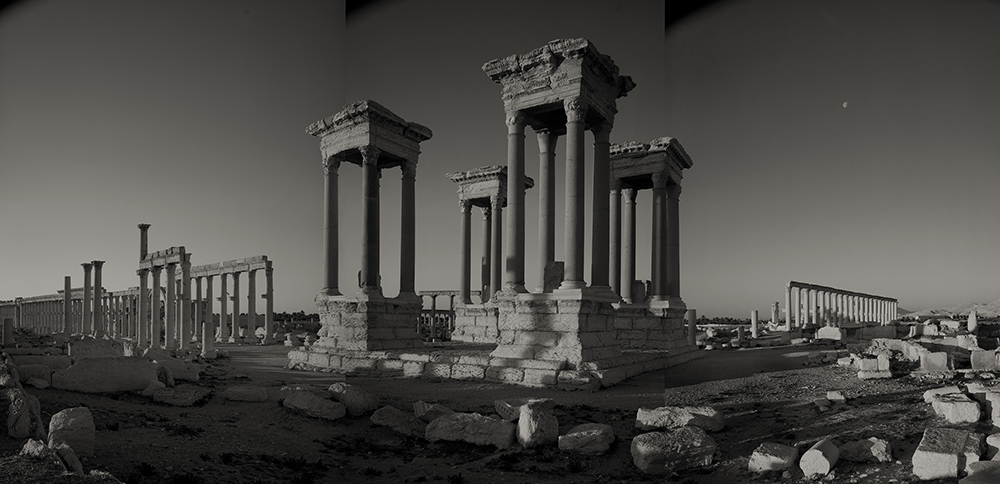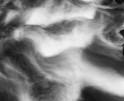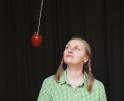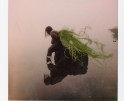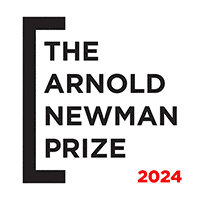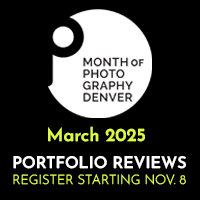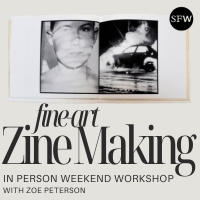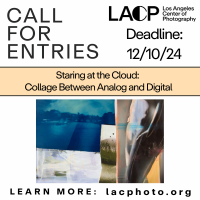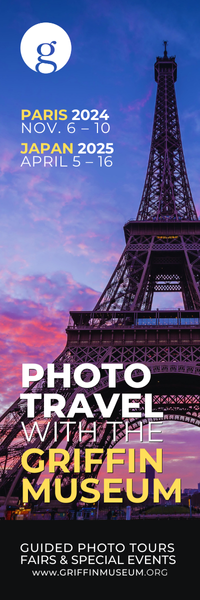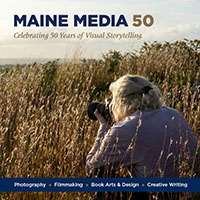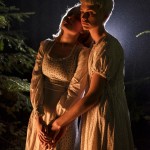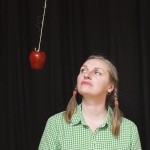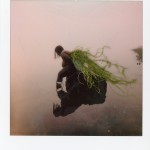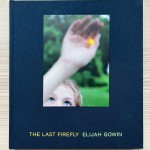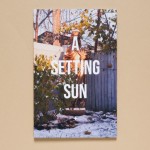Photographers on Photographers: Michael Kirchoff on Kenro Izu
I don’t remember exactly when it was, though very early on in my career, I had first witnessed the work of Kenro Izu. I do, however, remember quite vividly that they were images photographed in and around the temples of Angkor Wat, in Cambodia. It was the first time I had seen images from there that could actually be described as art. There was something very different, very…deep. They were magical, thoroughly stunning, and put me into a black and white world that I had not experienced quite like this. I quickly grew to admire a photographer that brought different places, worlds really, to me in a quite meaningful, yet mysterious way.
The result of this was not wanting to emulate the work in its look or execution. Izu’s images taunted me to get out and explore. Being from Japan, and living in the U.S., it was clear that he was stepping away from a calmer life at home and traveling through places like Bhutan, Egypt, and India. He was seeing and experiencing new lands, their people, and their culture, firsthand. Not only was this going on, but it was readily apparent that he was not making any of it easy on himself. He was lugging gear and using cameras that simply required “more”, not caring that there was an easier way to go about it. To me, he was the Frank Sinatra of photographers, doing it “his way”. From that point on I knew that stepping out of your comfort zone and photographing in a way that you wanted, without a care of how difficult it was or what others thought, was the way to go. It also made you want it more, knowing that it was taking substantial effort to portray your vision in the photographs you made.
Kenro Izu’s images beckon you to look far from home, and experience life from a different perspective. He has taught me to let go, trust my instincts, and do what it is that I wish do. He has showed me that my own travels, through photography, have filled me up and taught me things I would never find if I’d never left home. Simply put, I am a better person for all of it. Thank you, Kenro.
On September 14th, Scheinbach and Russek, Ltd will open the exhibition Yumiko Izu and Kenro Izu – In Harmony, celebrating partners in life and art. The exhibition runs through October 19th, 2018.
Michael Kirchoff works in the worlds of both commercial and fine art photography. A commercial shooter for over twenty-five years, it is his fine art work that has set him apart from others, with instant film and toy camera images fueling more than a few bodies of work. His consulting, training, and overall support of his fellow photographic artist continues with assistance in constructing ones vision, reviewing portfolios, and finding exhibition opportunities, which fill the gaps in time away from active shooting.
Michael is also an independent curator and juror for a number of organizations and galleries around the country, including Critical Mass. In addition, he spent ten years (2006-2016) on the Board of the American Photographic Artists in Los Angeles, producing artist lectures, as well as business and inspirational events for the community. Currently, he is also an Editor at BLUR Magazine, Editor-in-Chief at Analog Forever Magazine, and has recently founded the online photographer interview website, Catalyst: Interviews.
Michael’s fine art imagery has garnered recognition from the IPA Awards, PX3, Photographers Forum, and Critical Mass. His photographs have been published in L’Oeil de la Photographie, B&W (U.S.), Black & White (U.K.), Seities, Esquire, BLUR, Harpers, Adore Noir, Fraction, SHOTS, Diffusion Annual, and Lenscratch, among others. Michael also continues to exhibit his work domestically and internationally, with more than a dozen solo exhibitions, and over fifty group exhibitions to date.
Kenro Izu was born in Osaka, Japan in 1949. While studying Art at Nippon University in Tokyo, Izu visited New York, and has made it his home since 1971. After the opening of Kenro Izu Studio in New York City, in 1974, Izu started traveling and photographing the world’s Sacred Places, and the project has become his life-long work since 1979. For these projects, Izu uses 14×20 inch large format film camera to create platinum prints, which render delicate nuance and capture the spirituality of each sacred place.
From 2013-2016, Izu worked on a documentary project, Eternal Light, of the people who live in the fringe of India’s society, using a medium format film camera. From 2015-2017, he completed the project, Requiem, portraying the city and its people, vanished nearly 2000 years ago in Pompeii, Italy, by volcanic eruption. From 2017 to date, Izu has worked on, Sacred Land: Fuzhou, in China, where villages, some abandoned, are threatened to be submerged by a newly built dam.
Izu has published 12 books, which include Sacred Places by Arena Editions, Bhutan: Sacred Within by Nazraeli, and Territories of Spirits by Foundation Photography at Modena/Skila Books. Seduction, Izu’s still-life work, was published in 2018 by Damiani. A book of Eternal Light is scheduled to be published in 2018 by Steidl.
Izu is a recipient of awards and fellowships, including the National Endowment for the Arts, New York Foundation for the Arts, and the Guggenheim Fellowship.
Izu’s work has been exhibited in the Rubin Museum of Art, New York; Arthur M. Sackler Gallery, Washington, D.C.; Kiyosato Photographic Art Museum, Yamanashi, Japan; Howard Greenberg Gallery, New York; Persiehl & Heine, Hamburg, Germany; Serindia Gallery, Bangkok, Thailand,;Forma Galleria, Milan, Italy; Foundazione Fotografia Modena, Modena, Italy, and other museums and galleries throughout the USA, Europe and Asia.
Michael Kirchoff: Thank you for taking the time to grant me this interview, Kenro. It’s an honor to get to know the man behind so much incredible imagery. I wanted to simply start off by asking about your start in photography, and if there was a specific person or event that drove you in its direction?
Kenro Izu: My interests in photography started as a young scientist (want to be), when I was in high school, in the regional city of Iwakuni, Japan. My first SLR camera was to fit onto a microscope to photograph bacteria and other micro organs. However, when I faced a selection of university, I chose an art college instead of medical. I switched from microscope to lenses, and start photographing nature and people.
MK: You make notable use of a 14×20” view camera, custom made for you by Deardorff. It’s also worth mentioning that you take this camera, and all of its associated bits and pieces, and travel very long distances in pursuit of your photography. How much of a logistical endeavor is this, and what inspires you to take this approach?
KI: In early 80’s while I was searching for a method to photograph and print Sacred Places, where I was captivated with the dense air that surrounds the sacred places. In order to capture the air, my initial attempts by 4×5 or 5×7 camera and then enlarged to make prints, did not satisfy my expectation.
That was about the time when I first encountered the prints by Paul Strand. They were platinum prints by contact printing 8×10 negatives. I found the quality that I was looking for, and realized it was the contact printed platinum print. As I needed larger print size than 8×10, I consulted with Jack Deardorff of Deardorff & Sons, a view camera maker in Chicago. Jack came up the idea of the 14×20 format, which is about same proportion as 35mm, or 5×7, that I liked.
After 1985, when my 14×20 Deardorff was delivered to me, I received this camera with four old lenses of 165mm, 355mm, 475mm and 600mm, all by Dagor, made during the turn of the century. I had made special cases to transport the equipment; a case for camera body, six film holders, tripods, and support stands. There is also a shoulder bag to carry the four lenses with exposure meter, filters, etc. Another bag is made to hand carry 80-120 sheets of 14×20 film in a custom made X-ray shield bag. Finally, a large suitcase, to hold various tools, spare parts, reflector and clothing, shoes, rain ware, etc. A total of four large cases, with two carry-on bags, are about 300 pounds of total weight.
This is the gear that I took to many countries for 30 years – from the desert in Egypt, to the jungles of Cambodia and Vietnam, Himalayan mountains of Tibet, Bhutan and Ladakh, remote island of Easter Island, and the rolling hills of England and Scotland. I usually travel alone, but I make prior arrangements of transportation and guide, with a local helper to meet me at the airport of the destination. It takes a minimum of three helpers to carry all the equipment from vehicle to the location.
The reason why I use this very large camera?
As far as the image quality is concerned, the enlarged print or negative are not a match for the contact print by the original large negative. Also, the platinum printing process renders a long tonal scale and infinite range of grays in a warm tone, which I find desirable for my subjects and sacred places.
An exception is the series, Eternal Light (India 2013-2016), where I used a medium format film camera to photograph very intimate scenes, and needing to be as discreet as possible. These are printed in gelatin silver. However, I have been utilizing the 14×20 camera and platinum printing process for the majority of my work.
MK: You use a few historical processes in your printmaking, such as platinum, palladium, and cyanotype. More recently, you have also been offering prints made digitally, as archival pigment prints. What are the inherent qualities of each, and are they chosen for a specific project or body of work?
KI: During the time between 2001-2004, I made a body of work entitled BLUE, that was inspired by the essay, In Praise of Shadows, by Japanese novelist, Junichiro Tanizaki. I wanted the photograph in very dark blue, whether it was a body or still life, to express the mystery of shadow. After numerous experiments, I achieved a technique of “cyanotype over platinum” to express the feeling. It is up to five layers of platinum and cyanotype, coated and exposed on a single sheet of watercolor paper.
In recent years, as the quality of digital technology has advanced, I was attracted by the capacity of making larger prints, which some of my subjects require. I utilized a medium format digital camera for Requiem (2015-2017), of Pompeii, Italy. I was using both 14×20 and the digital camera simultaneously, to capture Pompeii’s 2000 year old colorful murals and architecture. However, after all the experiments I made, I converted everything to black and white! I think regardless of film or digital, I am drawn to the monochromatic expression of simplicity in images. On the subject of Pompeii, the digital camera offered me a very wide angle lens, which was not available for my 14×20. I made sets of platinum edition prints from the 14×20 negatives, but the main body of work is as 24×30 archival pigment prints.
MK: A definite spirituality runs through all of your work and seems to honor each and every print. Was this an intentional aspect of your work from the start, and do you respond to your subjects with this in mind?
KI: Spirituality has been the theme of my photography throughout my career. I feel the ability to sense this spirituality makes humans stand out from other beings. Temples, churches, and tombs, where people naturally bow and kneel, are all related to the death of people. Those places seem to contain or be surrounded by a “sacred air”. This “air” makes the place a different dimension, if photographed at the right time. It is interesting to realize that I have been interested in sacred places where they are associated to human death.
At the beginning, I was trying hard to find a spiritual subject at the location of my choice. But working with this theme for many years, the spiritual subjects started to naturally stand out. I realized at one point, that when I was looking at (paying attention) something or someone, I looked because it had its own spirituality within.
MK: What is it that you get out of making photographs? Does the creative process have the same effect on you now as it did at the start?
KI: Making photographs is my life now, actually more now than when I was younger. I thought I had many elements of interests in my life, but I now realize that photography is the main part of my life (and joy of creating and discovery).
MK: I was originally drawn to your Sacred Places body of work many years ago. What led you to take on such a long term project, and do you think that this time is necessary before you feel it is completed?
KI: I believe to make a series in depth, at least 3-7 years is needed. That is the time I have spent on each body of work. It has been fascinating to see and photograph the different locations, the sacred places, and the culture and religion behind the location. This has kept me traveling and photographing my subjects.
When I moved from Sacred Places to Sacred Within (2002-2007), which was done in Bhutan, I sensed the sacredness was not in their architecture, but within the people. This was an eye-opening experience I started watching people more in depth. Subsequently, I started to point my camera more at people than architecture. In India, Where Prayer Echoes (2008-2013) was revisiting to focus more on the people living around the sacred places.
Later, Eternal Light (2013-2016), the subjects are “ordinary people” who are not even at sacred places.Their dignified way of life and death according to their faith have struck me, despite their living conditions.
MK: In addition to photographing and printing beautiful images from around the world, you also run a very successful commercial studio with your wife, Yumiko. Do you feel that you approach your fine art work very differently than your commercial work, or is there an underlying common thread that connects them both?
KI: I do think there is connection between the commercial work and personal work. Though I stopped commercial work several years ago, nearly 40 years of commercial work have trained my eyes to see the delicate nuance of light and shadow through daily work of jewelry photography. Also, in commercial work, I need to be able to identify the most important element within the composition quickly, which is required for the personal work when facing a sacred subject or person. The sensitive eye needs to be trained to respond to the subject instantly.
MK: With the proliferation of digital technology taking over the photography world, there seems to be some pushback from the analog world. It is not unusual to see the trend of more and more photographers taking on historical processes. Do you feel this is exactly that, a trend, or that possibly people have a desire to return to the way we used to create work before the pixel took over?
KI: I don’t think the clock can turn back. Digital technology can open more possibilities otherwise not available during the time of film photography. However, at the same time, those who use digital cameras tend to spend less time and fewer thoughts on their subject. In this age, not only in photography, people like to have everything quicker. I know some of us miss the days of slower progress, when we were provided time to think. Photography by film and chemistry, with its slower process allowed photographers time to observe the subject carefully. For some reason, the analog print, either gelatin silver, platinum or cyanotype, the difference between them and the digital image is clear. Not necessary good or bad, but I can see there is substance in the analog photographs.
MK: In 1996 you had founded the non-profit organization, Friends Without A Border, and in 1999 successfully opened the Ankgor Hospital for Children, providing medical care for the children of Cambodia. How did the project come about, how has it grown since its inception, and how had your photography been a part of its creation?
KI: It was 1993, during my photography trip to Angkor Wat, Cambodia, when I encountered the death of a girl. This little girl’s death was preventable in a hospital environment…if the family had been able to afford to pay a few dollars to a doctor. I was sad for both the doctor who let the girl die, as a skilled physician in a hospital, over few dollars, as well as the poverty of the family that could not save her life.
It was a naive and ambitious thought, wanting to create a children’s hospital for free, to poor families. However, I was fortunate to have many friends who cared, and were willing to support the building and maintenance of a free pediatric hospital in Siem Reap, Cambodia. In 1996, I founded the non-profit organization, “Friends Without A Border” (FWAB) to build and manage Angkor Hospital for Children (AHC). The AHC was a small hospital, opened by staff of 50 in 1999, and has grown to staff over 500, seeing more than 500 patients daily, and is the major medical training site in all of Cambodia.
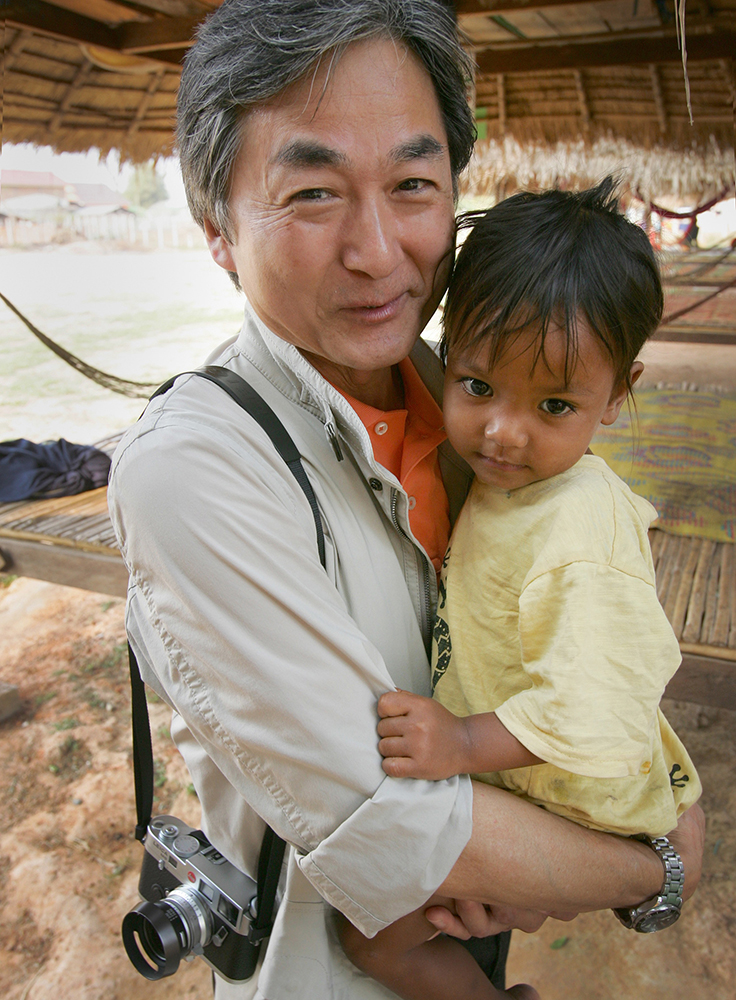
©Kari Grobl, Photos for Town and Country Magazine. Images of Angkor Hospital For Children in Siem Reap, Cambodia, February 24, 2009
My initial funding to create the hospital came from the sales of my Angkor series of work.
Also, I have called all of the photographers on my contact list to donate their prints to auction off and raise needed funding through our annual “Friends of Friends Photo Auction” for 21 years. I am a photographer, and not powerful or wealthy, but believe in the power of art. “Art can make a difference” has become the slogan of our organization.
MK: What are the key elements used to tap into creativity? Is there a formula of some kind needed?
KI: If I keep my radar of sensitivity tuned up, there are things caught naturally in that radar. Usually, when a current body of work is nearing the end, the next project comes into my radar without thinking too hard. It happens spontaneously, because my inner self is craving for it.
MK: Besides photography, are there any other creative pursuits that you engage in?
KI: I am not sure if this is a creative pursuit, but my long time hobby of fly fishing for trout always bring me back to basics…being surrounded by water, woods, wild life, and all in nature. I am at the mercy of the great nature that shows me all the beauty and magic.
MK: What do you feel is the best way for you to grow as an artist? Are there any fears behind treading new waters?
KI: I have always started treading water or ground on my own or since the very beginning.
Even when I landed in the U.S. in 1970 with little English language skills, no working experience, and $85 in my pocket, I built a career as an independent photographer as the only option. My dream of becoming a photographer was to realize my photographic works exhibited on the wall of museums, touching and resonating the hearts of the viewer. Now that I’m nearly 70 years old, I admire the courage and foolishness of young Kenro! I am a firm believer of “Dreams can come true, if you keep dreaming and moving forward”.
MK: What’s next for your photography? Any new projects you have in the works?
KI: I have been working on Sacred Land: Fuzhou, in China, since 2017. The area of Fuzhou has been a wealth of culture for hundreds of years, but some villages are abandoned for some reason, and many are destined to be under water by a newly built dam. I plan to continue this project another year or two.
After that, I start a new project, Noh Mask: In the Other Dimension, this summer in Japan. This is the first project that takes place in my home country of Japan. Though I have little knowledge about traditional Noh dance and its 650 year history, I have been very interested in these masks. Many are 500-600 years old, and handed down through generations of performers. Most of these “masks” in the world actually help transform the person who wears it. Ritual dancers of Bhutan, Ladakh and Tibet, as I saw them (monks wear one while dancing), transform into God, Evil, or Saints, and dance vigorously. Noh dancers are all male, but some wear female masks, and sometime transform into women of Snake, Evil, or Dragon. Unlike the mask dance of other countries, Noh dance is rather minimal of movement in performance. I’d like to capture the magic and secrets of the old Noh masks.
MK: In speaking to future generations of photographers, do you have any words of wisdom to those setting out to make their own mark in the photographic world?
KI: Doing something you like can go long way, knowing that eventually you will be good at it, and can lead you to a better chance of success. In order to identify what you like, passionately, consider traveling to other lands with different cultures, languages, religion, and the value of life.
Posts on Lenscratch may not be reproduced without the permission of the Lenscratch staff and the photographer.
Recommended
-
Interview with Tabitha Barnard and Jake Benzinger: “Dead Trees Speak to Me” and Independent Photo Book PublishingNovember 21st, 2024
-
Interview with Owen McCarter and Drew Leventhal: “The Three-Eyed Fish” and Independent Photo Book PublishingNovember 20th, 2024
-
Photography Educator: Amy JorgensenNovember 15th, 2024
-
Desert Forest: Life with Joshua TreesNovember 5th, 2024
-
Photographers on Photographers Megan Bent in Conversation with Nakemiah WilliamsOctober 10th, 2024

